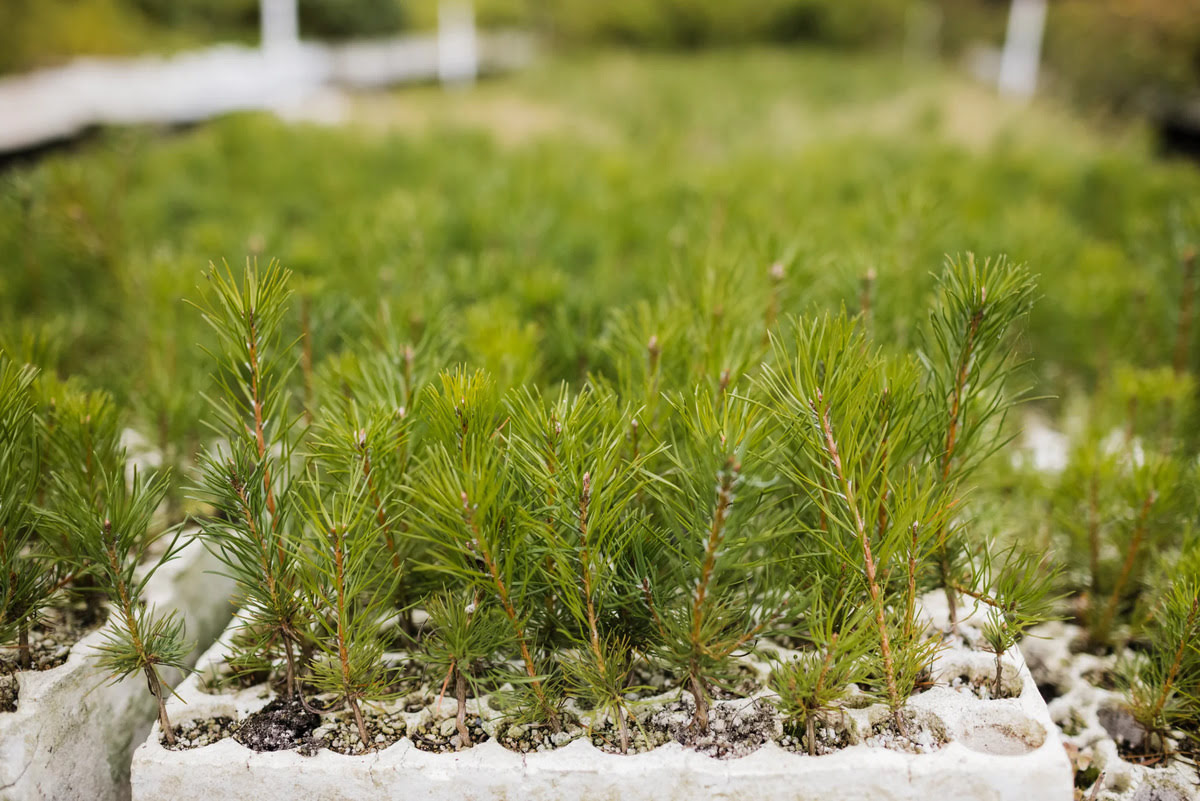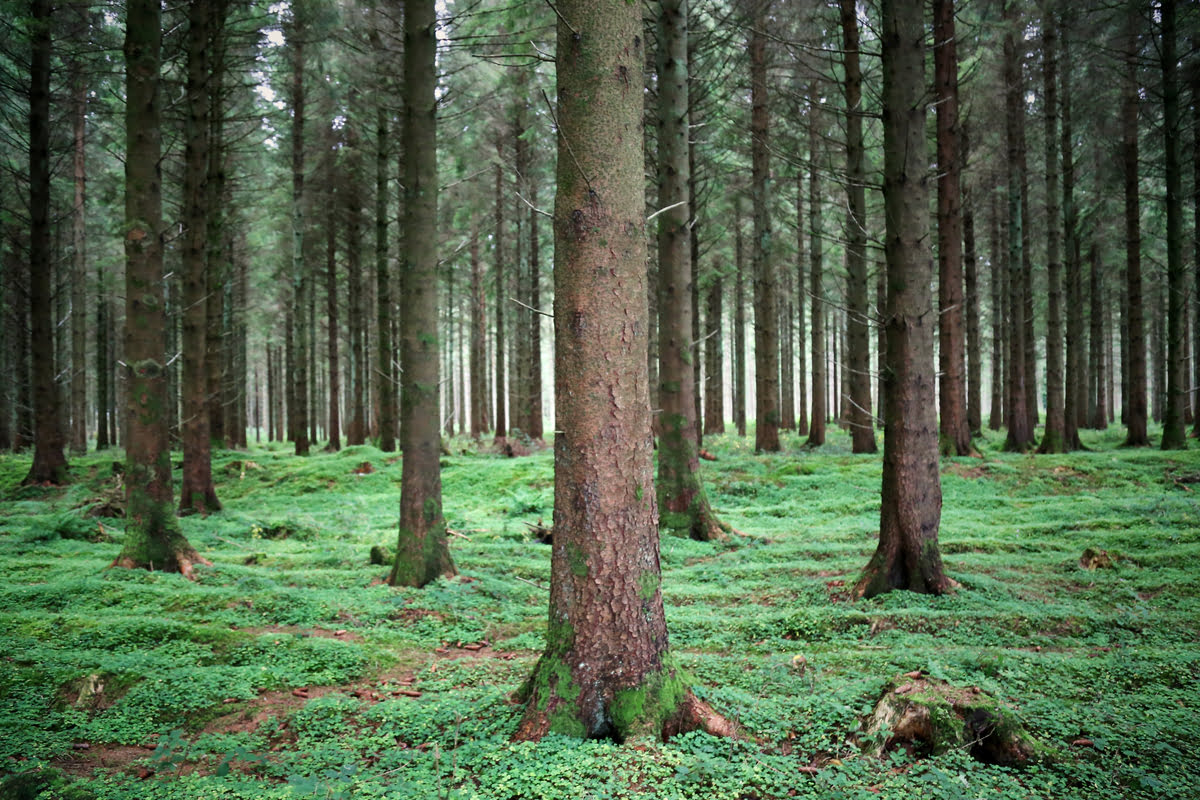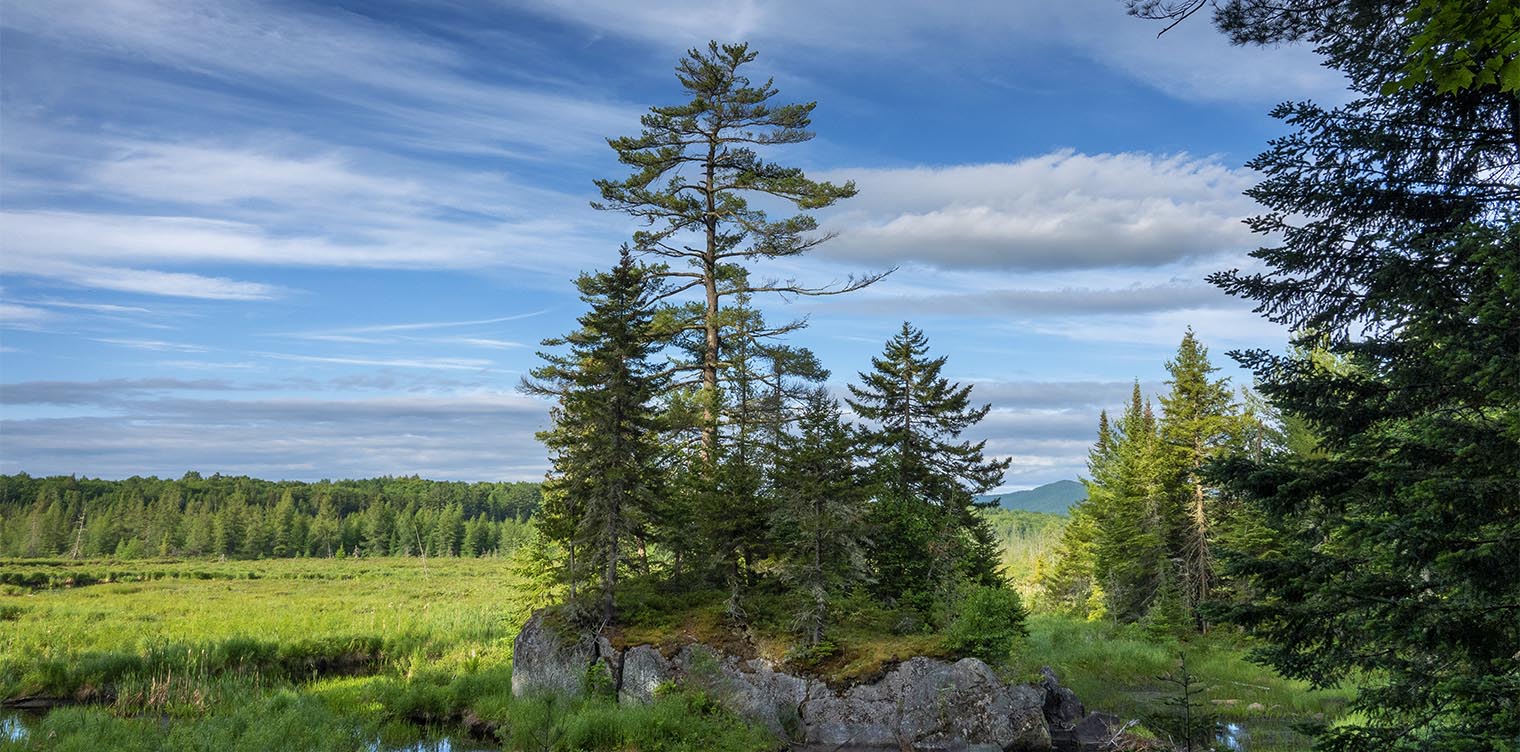Home>Gardening News and Trends>Latest News>How Much Are My Pine Trees Worth


Latest News
How Much Are My Pine Trees Worth
Published: October 28, 2023
Get the latest news on how much your pine trees are worth. Discover the value of your trees and make informed decisions about your property.
(Many of the links in this article redirect to a specific reviewed product. Your purchase of these products through affiliate links helps to generate commission for Chicagolandgardening.com, at no extra cost. Learn more)
Table of Contents
Introduction
Welcome to the fascinating world of pine trees and their value. If you’re a landowner or forest manager, you may have wondered just how much your pine trees are worth. Whether you’re considering selling timber or simply curious about the financial potential of your forest, understanding the factors that affect tree value is essential.
When it comes to assessing the value of your pine trees, several key factors come into play. Tree quality, size, species, market demand, and location are among the primary considerations that can influence the overall worth of your trees. By considering these factors and leveraging the expertise of professional appraisers or online resources, you’ll be better equipped to accurately determine the value of your pine trees.
Before delving into the intricacies of tree appraisal, it’s important to recognize that pine trees are valuable assets. Beyond their aesthetic appeal and environmental benefits, pine trees also hold substantial economic value. Whether used for timber, paper production, or other applications, the demand for quality pine trees remains strong.
In this comprehensive guide, we will explore the various factors that affect the value of pine trees. We will discuss the importance of tree quality, size, and species in determining their worth. Additionally, we’ll delve into the significance of market demand and location, as well as how you can assess the value of your pine trees through professional appraisers or online resources.
So, if you’re eager to discover the value that lies within your pine forest, let’s dive into the details and unlock the potential of your trees.
Factors Affecting the Value of Pine Trees
When it comes to determining the value of pine trees, several factors play a significant role. Understanding these factors will enable you to assess how much your pine trees are worth and make informed decisions regarding their management or potential sale.
1. Tree Quality: The quality of the pine trees is a crucial factor in determining their value. High-quality trees have straight trunks, minimal defects such as knots or scars, and a desirable species. Trees with higher quality timber are in greater demand and command higher prices in the market.
2. Tree Size: The size of the pine trees directly affects their value. Larger trees generally yield more timber and have a higher volume, which translates into higher potential profits. However, the market may have specific size requirements, so understanding the desired size range for the target market is essential.
3. Tree Species: Different species of pine trees have varying levels of desirability and market demand. Species such as Southern Yellow Pine, Douglas Fir, or Lodgepole Pine are highly sought after for their durability, strength, and versatility. Understanding the market demand for specific tree species is crucial in determining their value.
4. Market Demand: The demand for pine trees varies depending on factors such as regional construction activity, timber markets, and industry needs. It’s important to stay informed about current market conditions and trends to assess the demand for your pine trees accurately. Higher demand generally leads to increased value.
5. Location and Accessibility: The location of your pine trees can impact their value. If your trees are located near mills or easy transportation routes, it can lower harvesting and transportation costs, making them more valuable. Additionally, proximity to areas with high demand for timber can also increase the value of your pine trees.
By considering these factors, you can gain a comprehensive understanding of what influences the value of your pine trees. It’s important to note that these factors are interrelated, and a combination of favorable conditions can lead to higher tree value.
Tree Quality
Tree quality is a fundamental factor in determining the value of pine trees. High-quality trees fetch higher prices in the market due to their superior timber characteristics and aesthetic appeal. Several key aspects contribute to assessing the quality of pine trees:
Straight Trunks: Pine trees with straight and uniform trunks are highly valued. These trees are easier to process, resulting in higher-quality lumber with fewer defects. Straight trunks also allow for efficient utilization of timber resources during the milling and manufacturing processes.
Minimal Defects: Trees with fewer knots, scars, disease spots, or insect damage are considered to have superior quality. Such defects can weaken the wood or impact its appearance, lowering its value. Trees with minimal defects are preferred by industries that require high-quality, defect-free timber.
Species: Different species of pine trees have varying degrees of desirability and market demand. Some species, like Southern Yellow Pine or Longleaf Pine, are known for their strength, durability, and natural resistance to decay. Such species are highly sought after and command higher prices in the market.
Wood Density and Moisture Content: Dense wood is a desirable characteristic as it provides strength and durability. The moisture content of the wood is also an important factor. Trees with lower moisture content are more valuable as they are less prone to warping, shrinking, or expanding, making them suitable for a wide range of applications.
Age and Growth Rate: Younger pine trees tend to have tighter growth rings, indicating faster growth and higher potential timber quality. However, older trees can also exhibit desirable growth characteristics, such as slow growth in dense forests, resulting in narrower growth rings. The age and growth rate of the tree can influence its value.
Harvesting Considerations: The ease of harvesting and extracting the trees from the forest also affects their value. Trees that are readily accessible and have minimal obstacles, such as steep slopes or dense underbrush, are more valuable. Easy access reduces harvesting costs and increases the profitability of the timber.
It’s important to assess and consider these various factors when determining the quality of your pine trees. Engaging the expertise of a professional forester or consulting online resources can provide you with valuable insights into evaluating the quality of your trees accurately.
Tree Size
The size of pine trees is a critical factor in determining their value. It directly influences the volume of timber that can be harvested and the potential profitability of the trees. Here are some key considerations related to tree size:
Diameter at Breast Height (DBH): The DBH is a standard measurement taken at 4.5 feet above the ground. It indicates the diameter of the tree trunk and is widely used to assess tree size. Larger DBH measurements typically correspond to larger trees with a higher volume of usable timber.
Height: The height of a pine tree is another important factor. Taller trees often yield longer and more valuable lumber, especially for applications like construction or utility poles. The height of the tree is also reflective of its overall growth and maturity.
Crown Size: The crown refers to the branches and foliage at the top of the tree. Larger crowns suggest healthy and vigorous growth, indicating a higher-quality tree. Additionally, the crown size can impact the overall aesthetic value of the tree, making it more attractive to potential buyers.
Volume: The volume of timber that can be derived from a tree directly affects its financial value. It is determined by considering the tree’s height, diameter, and taper, which is the change in diameter from the base to the top. Trees with a larger volume have the potential to generate more revenue.
Market Requirements: It’s essential to understand the specific size requirements of the market you intend to sell the timber to. Some markets may prefer smaller-sized trees for specific applications, while others may require larger-sized trees. Knowing the market demand for different tree sizes will help you determine the value of your pine trees more accurately.
When assessing the value of your pine trees, consider both the individual tree sizes and the average size of the stand or forest. A stand with a mix of different-sized trees can have a diverse value, depending on the specific requirements of potential buyers or markets.
Remember, professional foresters and online resources can provide valuable guidance in determining the size and potential value of your pine trees. By understanding the significance of tree size, you can make informed decisions regarding potential harvesting, timber sales, or forest management strategies.
Tree Species
The species of pine trees significantly impacts their value in the market. Different species possess varying characteristics and qualities that make them more desirable for specific applications. Understanding the market demand and value associated with each species is crucial when assessing the worth of your pine trees.
Southern Yellow Pine: One of the most sought-after species is Southern Yellow Pine (SYP). It is known for its exceptional strength, stability, and durability, making it ideal for construction purposes such as framing, decking, and flooring. SYP commands a premium price in the market due to its wide range of applications and reliability.
Lodgepole Pine: Lodgepole Pine is a popular choice for industries that require strong and straight-grained timber. It is commonly used in construction, cabinetry, and furniture. Lodgepole Pine has relatively high value due to its ability to withstand harsh weather conditions and its natural resistance to pests and diseases.
Ponderosa Pine: Ponderosa Pine is valued for its versatility and aesthetic appeal. It is utilized in furniture making, interior trim, and paneling. The unique grain patterns and warm tones of Ponderosa Pine make it highly sought after by builders and homeowners alike.
Longleaf Pine: Longleaf Pine is renowned for its strength and durability. Historically used for shipbuilding, this species is now in demand for its exceptional resistance to rot and decay. Longleaf Pine is often preferred for outdoor applications such as decking, fencing, and siding.
Douglas Fir: While not strictly a pine species, Douglas Fir is commonly associated with pine trees due to its similar characteristics and usage. It is highly valued for its strength, stiffness, and dimensional stability. Douglas Fir is widely used in construction, heavy timber framing, and industrial applications.
Market Demand: The value of pine trees can fluctuate based on the current market demand for specific species. Industries, manufacturers, and builders have different preferences and requirements, which can influence the prices paid for different pine species. Understanding the market demand for each species can help you determine the value of your trees more accurately.
Local Ecosystem: It’s also important to consider the ecological factors associated with different pine species. Some species thrive better in certain regions, climates, or soil conditions. Assessing the suitability of the species to your local ecosystem is vital for long-term forest management and sustainability.
By understanding the characteristics and market demand for different pine tree species, you can better evaluate the value of your trees. Consulting with forestry professionals or utilizing online resources can provide invaluable insights into the specific attributes and value associated with each species.
Market Demand
The market demand for pine trees plays a significant role in determining their value. Understanding the current market conditions and trends is crucial for assessing the potential worth of your pine trees. Here are some key factors to consider when evaluating market demand:
Construction Activity: The construction industry is a major consumer of timber and heavily influences market demand. The level of construction activity, including residential, commercial, and infrastructure projects, directly impacts the demand for pine trees. A strong construction market often leads to higher prices for timber products.
Industrial Needs: Various industries rely on pine trees for different applications. Manufacturers of furniture, cabinetry, flooring, and other wood products require a steady supply of quality timber. Understanding the specific needs of these industries can help assess the demand for pine trees and their corresponding value.
Export Markets: The global timber market also affects the demand for pine trees. Some countries have high demand for pine timber products, leading to increased export opportunities. Monitoring international market trends and identifying potential export markets can provide insights into the demand and value of pine trees.
Government Policies and Regulations: Government policies and regulations related to forestry practices, environmental sustainability, and timber imports can impact the demand for pine trees. Keep track of any changes in regulations that might affect the market demand and pricing of timber products.
Market Trends: Staying updated on market trends is essential for assessing market demand. Industry publications, market reports, and networking with professionals in the forestry sector can provide valuable insights into current and projected market conditions. Understanding the trends and shifts in the market can help you make informed decisions regarding the value of your pine trees.
Local Factors: Consider the specific characteristics of your local market. Factors such as regional preferences, availability of competing timber species, and the presence of mills and manufacturing facilities can influence the demand and pricing of pine trees in your area. Collaborating with local industry experts can provide you with a more accurate assessment of the market demand for pine trees.
By analyzing market demand, you can determine the potential value of your pine trees more effectively. It’s also important to regularly monitor market conditions to adapt your forest management strategies and take advantage of favorable market opportunities.
Location and Accessibility
The location and accessibility of your pine trees can significantly impact their value. The proximity to mills, transportation routes, and markets can affect harvesting costs, logistics, and overall profitability. Here are some key considerations related to location and accessibility:
Proximity to Mills: The closer your pine trees are to mills or processing facilities, the lower the transportation costs. Mills prefer timber that can be easily accessed and transported, as it reduces the time and expense involved in hauling the logs. Being in close proximity to mills can increase the value of your pine trees and make them more attractive to buyers.
Transportation Infrastructure: The presence of well-developed transportation infrastructure, such as roads, highways, or rail networks, can make your pine trees more accessible. Adequate transportation systems enable efficient movement of harvested timber from the forest to processing facilities or markets, reducing costs and increasing the value of your trees.
Harvesting Constraints: Consider any physical or environmental constraints that may affect the harvesting process. Steep slopes, wetlands, or rugged terrain can increase harvesting costs and subsequently impact the value of your pine trees. These constraints can affect the efficiency and safety of logging operations, making the trees less desirable or profitable to harvest.
Market Proximity: Being located near areas with high demand for timber can positively impact the value of your pine trees. Urban centers, construction hotspots, or regions with growing populations often have greater demand for timber products. If your trees are conveniently situated near these markets, it can increase their value due to reduced transportation costs and increased market access.
Environmental Factors: Consider the environmental conditions and sustainability practices associated with your pine trees. Buyers, such as eco-conscious consumers or companies focusing on sustainable sourcing, may be willing to pay a premium price for timber from well-managed forests. If your trees are located in an environmentally friendly or certified sustainable region, it can enhance their value and market appeal.
Legal and Regulatory Considerations: Stay aware of any legal or regulatory constraints related to tree harvesting or forestry practices. Compliance with local regulations and permits is necessary to ensure that your pine trees can be harvested legally. Any restrictions or requirements imposed by governing bodies may impact the value of your trees or the marketability of the timber.
Considering the location and accessibility factors can help you assess the value of your pine trees more accurately. Take into account the logistics, transportation costs, and market advantages associated with your location. Understanding these aspects will enable you to make informed decisions about harvesting, marketing, and managing your pine trees.
Assessing the Value of Pine Trees
Assessing the value of your pine trees is a crucial step in making informed decisions about their management, potential sale, or utilization. While determining the exact value can be complex, there are several approaches you can take to evaluate the worth of your pine trees:
Hiring a Professional Appraiser: Engaging the services of a professional appraiser or forester can provide you with an accurate assessment of your pine trees’ value. These experts have the knowledge, experience, and tools to evaluate various factors such as tree quality, size, species, market demand, and location. They can conduct a thorough assessment of your forest and provide you with a detailed estimation of the value of your pine trees.
Utilizing Online Resources and Tools: The internet offers a wealth of resources and forestry tools that can help you assess the value of your pine trees. Online calculators and market analysis platforms provide estimates based on inputs such as tree size, species, and location. These tools can give you a rough indication of the value of your trees, but keep in mind that they may not be as accurate or tailored as a professional appraisal.
Comparing Market Prices: Researching current market prices for pine timber can give you a general idea of the value of your trees. Look for information on recent timber sales in your area or region. Local timber associations or industry publications may provide data on average stumpage prices, which can serve as a benchmark for evaluating the value of your pine trees.
Considering the Cost-Benefit Analysis: Assessing the cost versus the potential revenue from harvesting your pine trees can help you determine their value. Consider the expenses involved in harvesting, transportation, and any potential reforestation or regeneration costs. Compare these costs with the estimated revenue from selling the timber to determine the overall value of your trees.
Consulting with Industry Professionals: Seek advice from professionals in the forestry sector, such as timber buyers, loggers, or forestry consultants. Their expertise and knowledge of the market can provide valuable insights into the current value of pine trees in your specific area. Building relationships with industry professionals can also open doors to potential buyers or markets for your timber.
Keep in mind that accurately determining the value of pine trees can be complex and may require a combination of approaches. Different methods may yield varying estimates, so it’s important to consider multiple factors and consult with experts to arrive at a comprehensive valuation.
By utilizing professional expertise, online resources, market comparisons, and cost-benefit analysis, you can gain a better understanding of the value of your pine trees. This information will empower you to make informed decisions regarding the management, sale, or utilization of your valuable forest resources.
Hiring a Professional Appraiser
When it comes to accurately assessing the value of your pine trees, hiring a professional appraiser or forester is highly recommended. These experts have the knowledge, experience, and specialized tools to evaluate various factors that influence tree value. Here are some key benefits of hiring a professional appraiser:
Expertise and Experience: Professional appraisers and foresters have extensive knowledge of tree species, growth characteristics, timber markets, and forest management practices. Their expertise allows them to assess the quality, size, and marketability of your pine trees accurately. They understand how factors like tree health, species desirability, and regional market conditions affect the overall value.
Specialized Tools and Techniques: Appraisers utilize specialized tools and techniques to measure tree size, assess timber quality, and estimate volume. These tools can include calipers, diameter tapes, increment borers, and other equipment specific to forestry evaluations. Their use ensures accurate measurements and data collection, leading to more precise appraisals.
Comprehensive Evaluation: Appraisers assess not only the individual trees but also the entire forest or stand. They consider the overall forest health, species composition, tree density, and growth patterns. By evaluating the forest as a whole, they can provide a comprehensive assessment of its value and potential future growth, enabling informed decisions regarding long-term management strategies.
Market Insights: Professional appraisers have up-to-date knowledge of the timber market. They stay informed about current price trends, market demand, and industry dynamics. With their insights, they can provide a realistic appraisal considering the current market conditions. This information is valuable for setting realistic expectations and making sound decisions regarding timber sales or investments.
Official Documentation: Appraisers often provide formal reports and documentation that outline their findings. These reports can serve as valuable documentation for insurance purposes, tax assessments, or legal requirements. Having official documentation from a professional appraiser adds credibility and authority to the valuation of your pine trees.
Objective Evaluation: Appraisers provide an objective evaluation of your pine trees. They do not have a vested interest in the outcome, ensuring an unbiased assessment. Their professional judgment eliminates personal biases or emotions that may influence the valuation process. This objectivity adds credibility to the appraisal results.
When hiring a professional appraiser, look for individuals or firms with experience in forestry and expertise in valuing pine trees. Consider their qualifications, certifications, and references. Engaging the services of a licensed and reputable appraiser ensures that you receive a reliable and accurate assessment of your pine trees’ value.
By hiring a professional appraiser, you can have confidence in the evaluated value of your pine trees. Their expertise, specialized tools, and comprehensive evaluation methods provide a thorough and reliable assessment, enabling you to make informed decisions about your forest management or potential timber sales.
Utilizing Online Resources
In today’s digital age, online resources can be valuable tools in assessing the value of your pine trees. While they may not provide as accurate an evaluation as a professional appraiser, they can offer a starting point for understanding the potential worth of your trees. Here are some ways to utilize online resources:
Online Calculators: Several websites offer online calculators specifically designed for estimating the value of timber. These calculators typically require inputs such as tree species, size, and location. They utilize algorithms and market data to generate an estimated value based on the provided information. While these calculators are convenient and easily accessible, keep in mind that they may only offer rough estimates and are not as precise as a professional appraisal.
Market Analysis Platforms: Online market analysis platforms can provide insights into current market trends, timber prices, and demand. These platforms aggregate data from various sources and present it in a user-friendly format. By exploring these platforms, you can gain a better understanding of the market conditions, allowing you to estimate the value of your pine trees more accurately.
Industry Forums and Communities: Participating in online forestry forums or communities can be a valuable resource for gaining knowledge and insights. Engaging with industry professionals, fellow landowners, or foresters can provide you with valuable information about timber markets, recent sales, or experiences with valuing pine trees. These discussions can help you gauge the potential value of your trees based on real-world experiences shared by others.
Local Governmental and Forestry Websites: Many government agencies and forestry organizations provide information and resources online related to timber valuation. These websites often offer guidelines, publications, and educational materials that can help you understand the factors influencing timber value. They may also provide contact information for local forestry experts who can further assist you with assessing the value of your pine trees.
Researching Recent Timber Sales: Conducting research on recent timber sales in your area can provide insights into the current market value of pine trees. Look for information on stumpage prices, which represent the amount paid to landowners for standing timber. Local forestry associations, state forestry departments, or industry publications may publish reports or data on recent timber sales that you can use as a reference point.
Keep in mind that while online resources can be helpful in estimating the value of your pine trees, they should be used in conjunction with professional advice and local market insights. Every forest is unique, and factors such as local market conditions, tree quality, and specific timber uses can greatly impact the true value of your trees. Engaging with experts and utilizing online resources together will provide a more comprehensive understanding of the potential worth of your pine trees.
Conclusion
Assessing the value of your pine trees is a crucial step in managing your forest and making informed decisions about potential timber sales. By considering factors such as tree quality, size, species, market demand, location, and accessibility, you can estimate the worth of your pine trees more accurately.
Hiring a professional appraiser or forester is highly recommended for obtaining a comprehensive and reliable assessment of your pine trees’ value. These experts possess the knowledge, experience, and specialized tools to evaluate various factors and provide an in-depth analysis. Their expertise ensures an accurate valuation that takes into account local market dynamics and specific tree characteristics.
Utilizing online resources can also be a valuable starting point when assessing the value of your pine trees. Online calculators, market analysis platforms, industry forums, and governmental websites provide information and insights that can help you understand market trends and estimate the worth of your trees.
It’s important to remember that accurately determining the value of pine trees can be complex and may require a combination of approaches. No single method can provide a definitive value. Consulting multiple sources, seeking professional advice, and staying informed about market conditions can contribute to a more comprehensive understanding of the potential value of your pine trees.
By accurately assessing the value of your pine trees, you can make sound decisions regarding forest management, timber sales, or potential investments. Understanding their worth empowers you to leverage your forest resources effectively and ensure the long-term sustainability and profitability of your pine forest.








